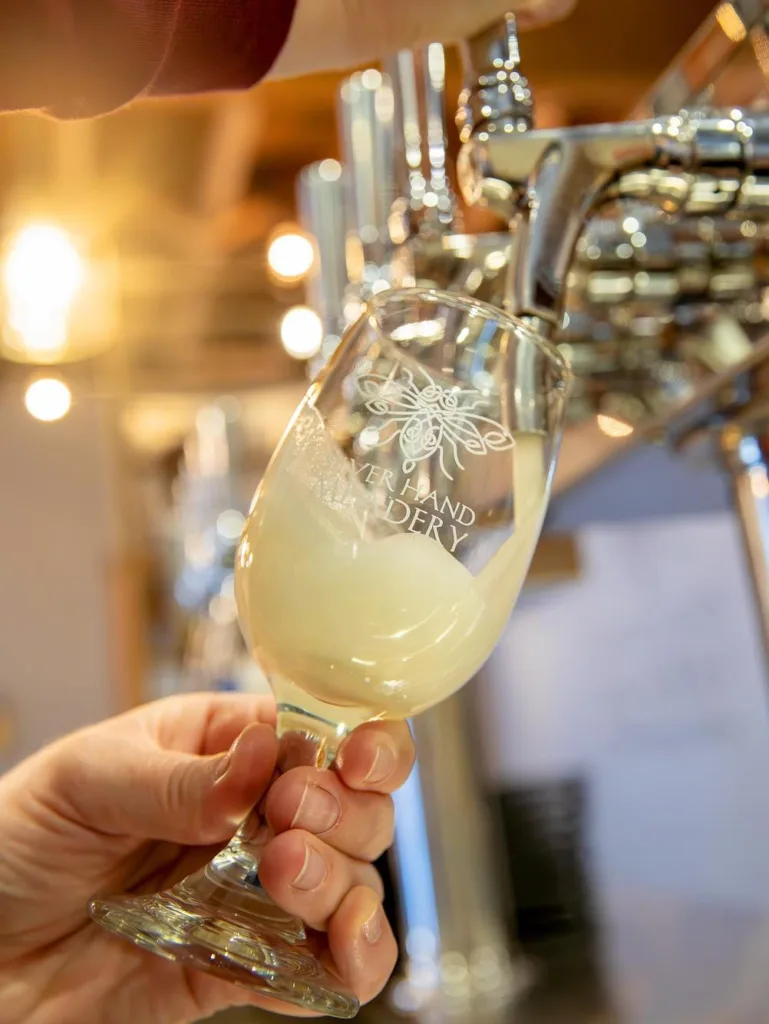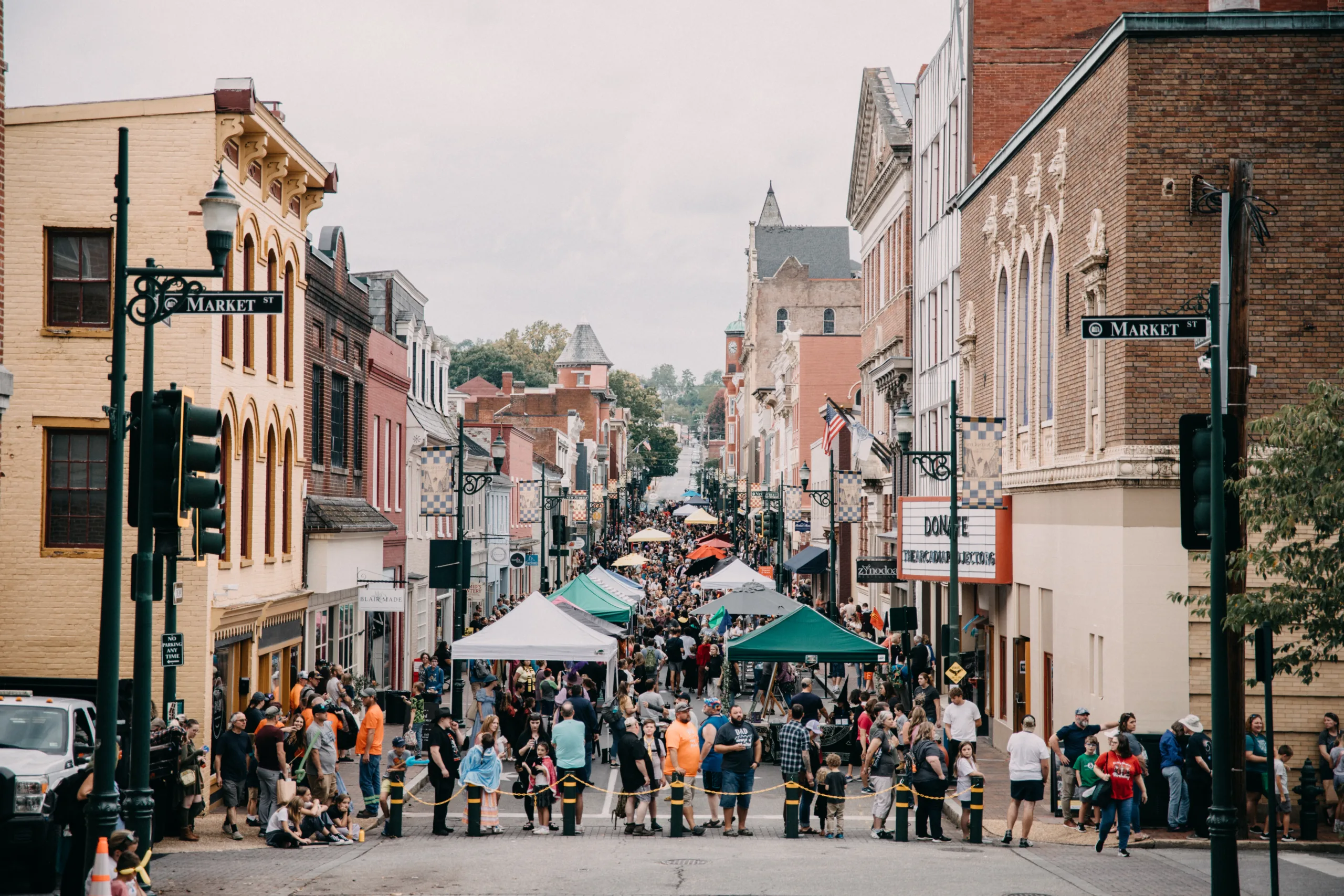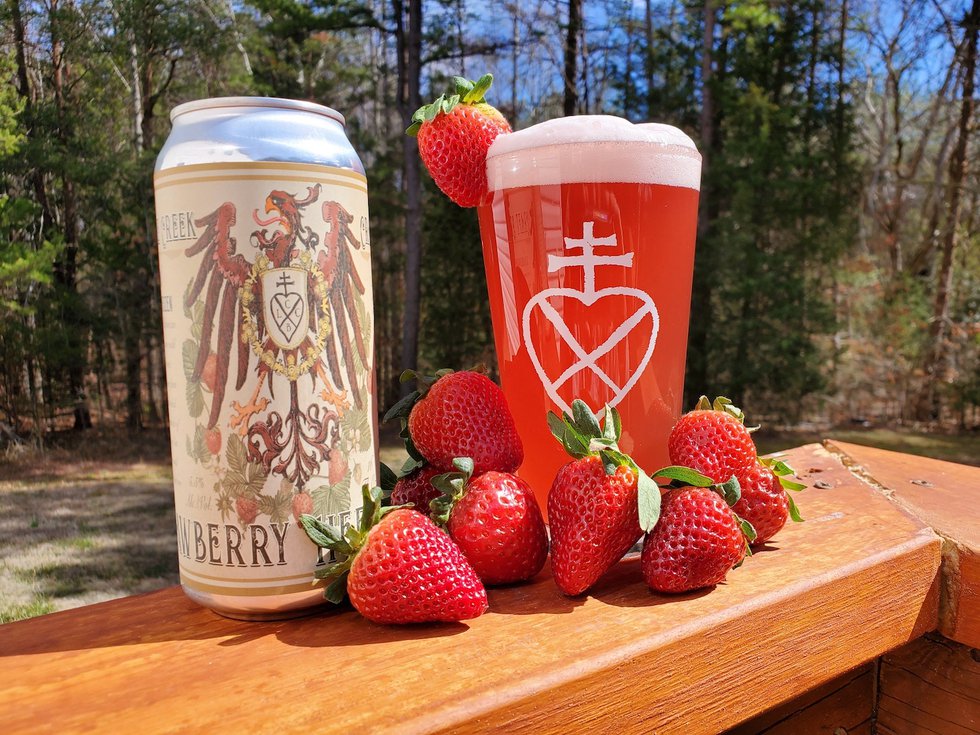This year’s launch of the Virginia Mead Trail—a network of nearly 20 homegrown meaderies across the state—signals a new day for an old brew called mead. In fact, mead has so captivated Virginia’s sustainable and eco-conscious alcoholic beverage culture that a collaborative guild has created the Virginia Mead Trail, inviting locals and tourists to experience a modern reimagining of mead with an actual mead-centric map of the Commonwealth. The trail, which runs from Richmond to Williamsburg, Charlottesville, the Shenandoah Valley, and west to Roanoke, features sweet, dry, still, and sparkling mead with signature flavors that vary, given the hyper-local flavor profile of mead.

Mead is, in fact, the oldest brew. It’s a legendary beverage—as in, once upon a time, a few drops of rain fell into a pot of honey, interacted with natural yeasts, fermented in the hot sun, and just like that—alcohol was introduced to the world. This honey-wine-ish brew birthed itself into the oldest liquor known to humankind.
On that accreditation alone, I probably speak for many of us when I say, “And we thank you very much.”
Mead became a worldwide staple beginning basically back in times of yore (think 7th millennium B.C.). It started in China’s Henan province. After that, it really got around.
Aristotle was apparently a big fan of mead. The Vikings loved it too. Chaucer used mead to woo the “town-bred” Alison (to no avail) in The Canterbury Tales.
Mead started losing steam around the 16th century when honey production, at least in Europe, took a hit from cooler temperatures brought about by the Little Ice Age. An agricultural boon also undercut mead when wildflower meadows were tilled and cultivated for crops. Add to that, new West Indies trade routes made sugar the more easily accessible sweetener (no more stings from grouchy bees).
Aside from loyalists who never let go of their affinity for mead—Ethiopia, for instance, has maintained mead as its national drink, called tej, for centuries—mead became a brew on the periphery. It was relegated to Renaissance festivals and those few buddies from college who you remember had a flair for developing craft beverages in their garage.
Around 2017, a slew of magazines, including Vogue, People, and Vanity Fair, wrote feature articles that gave a shout-out to the then-youngest mead master brewer—The Suite Life of Zack & Cody alum Dylan Sprouse. Whether or not his launch of a Brooklyn meadery sent out the smoke signal that mead is once again cool is hard to say. It certainly didn’t hurt.
Now you can shout it from the rooftops: Mead resoundingly got its groove back, to the tune of a $4 billion market growth forecast over the next four years. In terms of cornering that market, Virginia is running ahead of the competition.
“Virginia is one of the biggest mead-producing states in the U.S.,” says Regen Riley, tasting room and Insider Club manager of Silver Hand Meadery in Williamsburg. “No two honey harvests are ever the same,” he explains, which means each meadery tasting along the trail will be unique. “The flavor of honey can vary widely depending on the floral and nectar sources bees collect from and pollinate.” To give customers an expansive flavor profile, Silver Hand offers meads crafted from both coastal and mountain honeys.
Not that everybody is caught up on mead’s soaring popularity status. Microsoft Word’s spellcheck still incessantly insists the word “mead” is a typo, though that shouldn’t be the case for long if the Virginia Mead Trail’s tagline, “Virginia is for Mead Lovers,” has anything to say about it.
To plan your journey along the Virginia Mead Trail and learn more about participating meaderies, visit VirginiaMeadTrail.com.

What’s the Buzz?
A guide to the Old Dominion’s meaderies
From sweet to dry and still to sparkling, mead provides a distinctive tasting journey that bridges ancient brewing traditions with contemporary craft techniques. From Roanoke to Richmond, Chatham to Culpeper, explore the Virginia Mead Trail, and discover the state’s exceptional honey wine that naturally supports essential pollinators.
1. Atheling Meadworks
123 Campbell Ave., SE, Roanoke
AthelingMead.com
2. Black Heath Meadery
1313 Altamont Ave., Richmond
BlackHeathMeadery.com
3. Breezy Hill Meadworks
15981 Breezy Hill Ln., Smithfield
BreezyHillMeadworks.com
4. Funktastic Meads
1212 Alverser Plaza, Midlothian
FunktasticMeads.com
5. Garden Grove Brewing and Urban Winery
3445 W. Cary St., Richmond
GardenGroveBrewing.com
6. Hill Top Berry Farm Winery & Meadery
2800 Berry Hill Rd., Nellysford
HillTopBerryWine.com
7. Honey & Hops Brew Works
212 E. Main St., Front Royal
HoneyAndHopsBrewWorks.com
8. Meadery at Graham Ordinary
8578 Peaks Rd., Bedford
GrahamOrdinary.com
9. Misty Mountain Meadworks
661 Warm Springs Rd., Winchester
MistyMountainMead.com
10. Mountain Run Winery
10753 Mountain Run Lake Rd., Culpeper
MountainRunWinery.com
11. Peaks of Otter Winery
1218 Elmos Rd., Bedford
PeaksOfOtterWinery.com
12. Saga Meadery
7 South St., Front Royal
SagaMeadery.com
13. Saga meadery
256 E. Main St., Luray
SagaMeadery.com
14. Silver Hand Meadery & Honey Shop
224 Monticello Ave., Williamsburg
SilverHandMeadery.com
15. Thistle & Stag Meadery
2045 E. River Rd., Fork Union
ThistleAndStag.com
16. Thistlerock mead co.
3075Gables Run Rd., Charlottesville
ThistlerockMead.com
17. Three legged run
4418 W. Hundred Rd., Chester
ThreeLegRun.com
18. White oak mountain Meadery
455 E. Store Ln., Chatham
WineTrailTraveler.com
19. Windchaser Meadery
6931 Richmond Rd., Williamsburg
WindchaserMeadery.com
This article originally appeared in the October 2025 issue.









